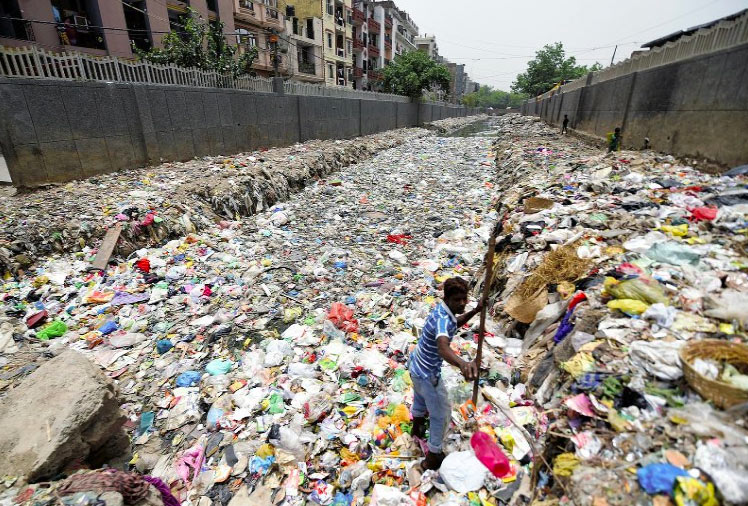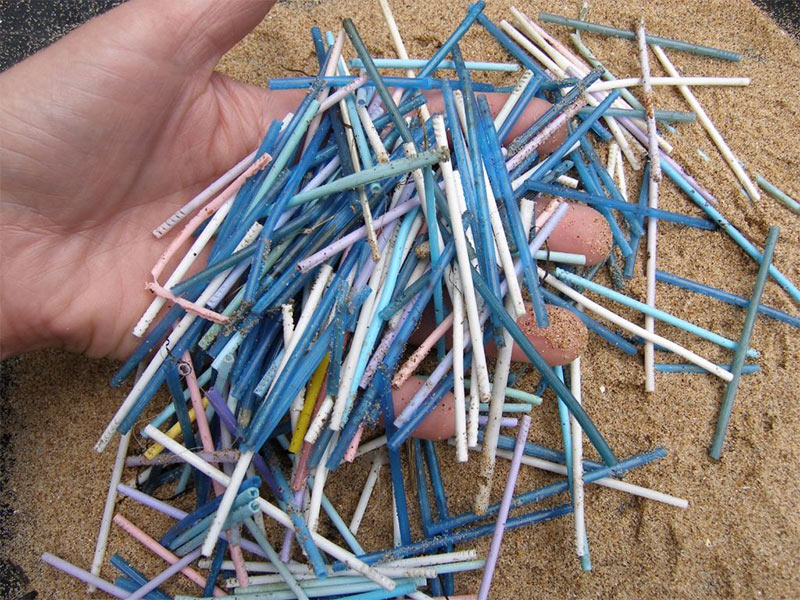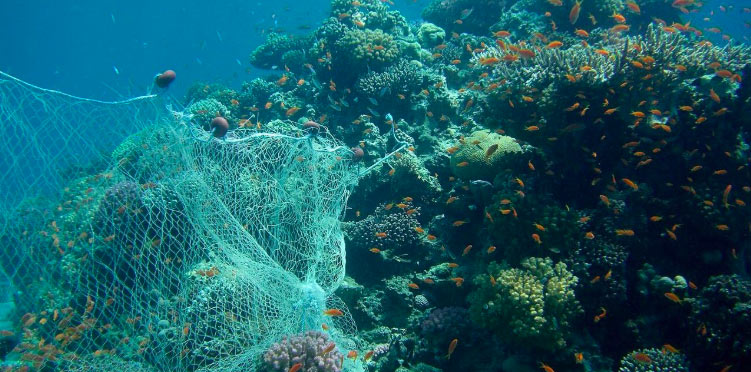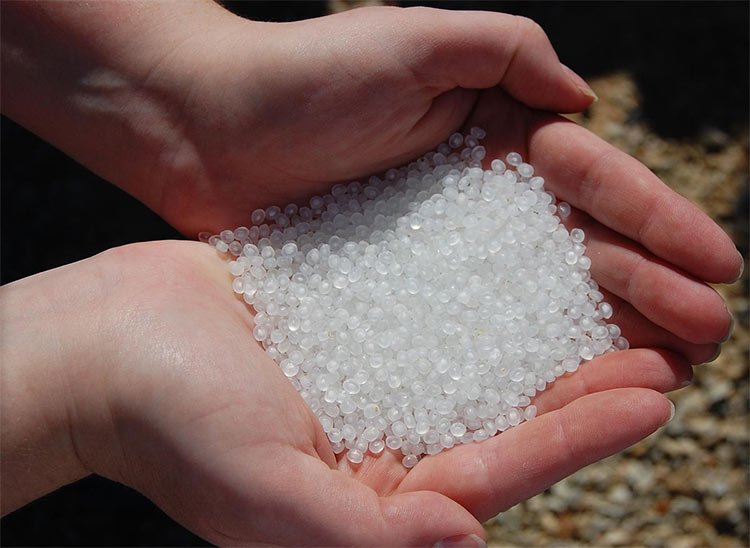Here’s a scary statistic for you: if current trends continue, by 2050, plastic in the ocean will outweigh fish.
In fact, there’s so much plastic in our oceans, there exists an area of the Pacific Ocean called the ‘Great Pacific Garbage Patch’, that is now four times the size of France.
But where is it all coming from?
From rivers

An estimated 90% of the plastic pollution in the oceans comes from just ten rivers. They are, in order:
| Position | River | Country/Countries |
|---|---|---|
| 1 | Yangtze | China |
| 2 | Indus | China, India, Pakistan |
| 3 | Yellow River | China |
| 4 | Hai River | China |
| 5 | Nile | Egypt, Sudan, South Sudan, Ethiopia, Uganda, Congo, Kenya, Tanzania, Rwanda, Burundi, Eritrea |
| 6 | Ganges | India, Bangladesh |
| 7 | Pearl River | China, Vietnam |
| 8 | Amur River | Russia, China |
| 9 | The Niger | Guinea, Mali, Niger, Benin, Nigeria |
| 10 | The Mekong | China, Myanmar, Laos, Thailand, Cambodia, Vietnam |
Two things that all of these rivers have in common are: they all flow throw areas with high population density, and they are all in developing countries.
The basin of the Yangtze is home to almost 500 million people, and it is the largest carrier of plastic pollution to the sea.
Developing countries, such as China and India, do not have the same level of sophistication when it comes to waste management and recycling technology. As well as that, there just isn’t the same level of public consciousness about the dangers of plastic pollution.
Thankfully, things are beginning to change. Early in 2018, China ordered 46 cities to begin sorting waste in order to reach a 35% recycling rate by 2020. The Chinese government are aware of the scale of the problem and are enacting measures to reduce the amount of plastic being discarded into rivers.
The Government of India is also beginning to sit up and take notice. They recently imposed a ban on the use of non-biodegradable plastic bags in New Delhi.
They recently imposed an interim ban on the use of non-biodegradable plastic bags.
From our landfills

According to Greenpeace, just 9% of plastic ever produced has been recycled. The rest ends up in landfill, or is burned.
Unfortunately, landfill is not a perfect system. Plastic can escape at various points throughout the process, either during transportation or after arriving at the landfill. Strong winds can cause the light plastic to blow away. If often ends up going down the drain, or finds its way into rivers, eventually heading out to sea.
From littering
Although littering is not as common as it once was, it is still a blight on our countryside, towns, and beaches.
Depressingly, 62% of England’s residents admit to dropping rubbish in the street from time to time, and half of Americans admit to the same.
Two of the most common forms of litter are plastic food packaging and cigarette butts (which contain plastic).
The Great British Beach Cleanup recorded the most commonly collected types of litter found on UK beaches. The results can be found below:
| Litter type | Number of items per 100 meters of beach |
|---|---|
| Plastic and polystyrene | 546 |
| Paper | 85 |
| Metal | 40 |
| Sanitary | 33 |
| Glass | 23 |
| Other | 23 |
| Cloth | 12 |
| Rubber | 11 |
As you can see from the table, plastic is by far the most common type of litter found on UK beaches.
During strong winds and certain tidal conditions, this plastic can be swept out to sea.
Similarly, plastic in streets and in the countryside can be blown by gusts of wind into rivers, or down drains and into the sewer system. Either way, the result is the same: more plastic pollution in the sea.
From our toilets

Too many people view the humble toilet as some kind of magical portal – flush anything down there and it will magically vanish. Out of sight and out of mind.
Unfortunately, plastic flushed down the toilet does not vanish. Instead, it ends up in the sea.
Sanitary products
According to research by the Marine Conservation Society, an estimated 700,000 panty liners, 2.5 million tampons, and 1.4 million sanitary towels are flushed down the toilet every day in the UK.
Approximately 700,000 panty liners, 2.5 million tampons and 1.4 million sanitary towels are flushed down the toilet in the UK every single day, according to figures published in the Journal of the Institution of Environmental Sciences.
According to the same research, one packet of sanitary pads can contain the same quantity of plastic as four plastic carrier bags.
In other words, an astonishing amount of plastic is being needlessly flushed down the toilet.
Cotton Buds
Cotton buds are another item that a lot of people think can go straight down the toilet. The small plastic stems are so small they often bypass sewage filters and head straight out to sea.
Steps are being taken to help educate people of the dangers of flushing plastic cotton buds, as well as convincing retailers to only stock biodegradable alternatives. For more information, take a look at Switch the Stick and the Cotton Bud Project.
When it comes to toilets, you can’t go wrong following the three P’s: pee, poo and (toilet) paper. Flushing anything else down the toilet may result in blocked pipes and more plastic in the sea, where it will remain for hundreds of years.
From fishing

Most people by now have heard of the Great Pacific Garbage Patch – an area of the Pacific Ocean absolutely covered in plastic pollution. It may surprise you to learn that, according to a recent study, fishing nets account for 46% of the garbage.
There is a term given to lost or abandoned fishing equipment: ghost gear. An estimated 640,000 tonnes of ghost gear is left in our oceans each year – that’s more than a tonne per minute.
Compared to other plastic waste, ghost gear can be particularly hazardous to marine life. Nets can ensnare, cut, suffocate and immobilise animals, often leading to days, weeks or months of pain and suffering.
Here are just some of the ways marine animals are affected by ghost gear:
- Seabirds have been known to make nests with pieces of netting. The birds can become tangled in the nets, preventing them from flying and feeding themselves and their young.
- Seals are naturally playful and inquisitive creatures. But playing with fishing nets can often result in them becoming tangled, hindering their ability to swim, and sometimes resulting in death.
- Whales and dolphins rely on their ability to swim many miles in a day looking for food. If they become trapped in plastic nets they lose this ability and can starve to death or drown.
Sadly, an estimated 100,000 marine animals are strangled, suffocated, or injured by plastic in the ocean every year.
Learn more about ghost gear on the World Animal Protection website.
From Industrial leakage

A nurdle might sound like a cute little creature from a Harry Potter book, but they are in fact small plastic pellets used to manufacture all manner of plastic products.
Their proper name is ‘pre-production plastic pellet’, and they are essentially the building blocks from which plastic goods are manufactured – plastic bottles, plastic bags, drinking straws, computer keyboards. Almost everything made of plastic starts its life as a nurdle.
Around 27 million tonnes of nurdles are manufactured in the United States every year. They are shipped from country to country in their billions.
To to mishandling by industry, and the minute size of nurdles, a lot of them escape the plastic production process and end up in the sea. They can be easily spilled during handling and wash down drains. This is made more likely by the fact that nurdles are so lightweight and they float.
In the UK, 279 beaches were examined, and three-quarters of them were found to be littered with nurdles.
Due to their size, can be extremely hazardous to marine life, as they are often mistaken for food.
Nurdles have been found inside multiple species of fish and seabirds, causing digestive problems and often death. As well as this, nurdles can soak up chemical pollutants from their surroundings, releasing these toxic chemicals into the animals that eat them.
From our clothes
One less commonly known source of plastic in our oceans is from the clothes we wear.
About 60% of the clothes we wear contain synthetic materials, such as polyester, nylon or acrylic. These plastic materials are used to make clothes more durable, and breathable, as well as reducing the cost to manufacture them.
However, every time we wash synthetic clothes, it is estimated that up to 100,000 tiny plastic particles (microplastics) are released from the clothes. These minute particles can then make their way into the sea.
Once in the ocean, they undergo a process called ‘photodegradation’, meaning they break into smaller and smaller pieces.
They are often digested by fish, who mistake the tiny, brightly coloured particles for food.
